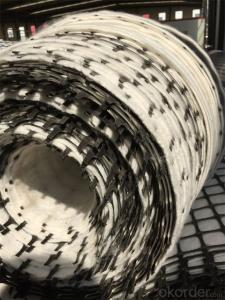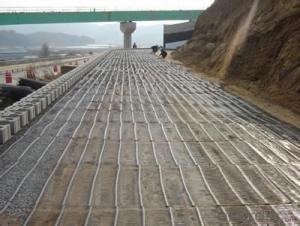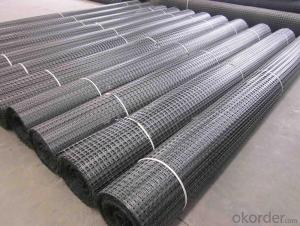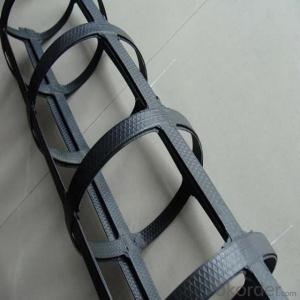Tenax Polyester Geogrid with CE Certificate for Construction
- Loading Port:
- Shanghai
- Payment Terms:
- TT OR LC
- Min Order Qty:
- 85800 m²
- Supply Capability:
- 1000000 m²/month
OKorder Service Pledge
OKorder Financial Service
You Might Also Like
The Description of Polyester Geogrid
Biaxial Geogrid is a kind of new favorable earthwork base material to strengthen the road surface and roadbed. This product is made by weaving and covering fiberglass filament. It is featured by high vertical and horizontal tensile strength, low unit extension, high flexibility, and favorable high and low temperature resistance. The products after surface covering own the favorable property of alkali resistance and aging resistance.
The details of Polyester Geogrid
| Type: | Geogrid | Material: | Polyester Geogrid | Place of Origin: | China (Mainland) |
| Certificates: | CE,ISO | Color : | White & Black | Width : | 1m--6m |
| Length | 50-200m | Mesh Size: | 10-40mm | Tensile Strength | 30KN-300KN |
| Area Weight | 130-900g/sm | Package | PP bags or PE film | Approximate mesh size | 12.7*12.7 25*25 40*40 |
Packaging & Delivery
| Packaging Details | PP bags or PE film. Or Packed as customers' requests; |
| Delivery Detail | 10-20days after see the payment. |


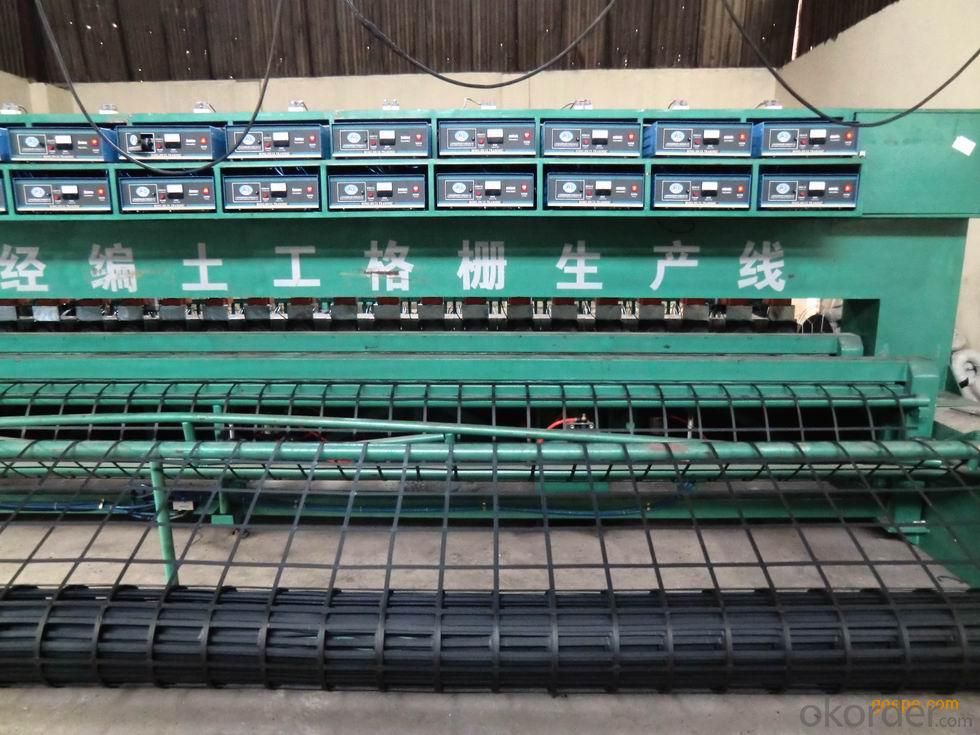
Remarks: we are very large fortune 500 enterprise with more than 20branches in worldwide, and have almost ten years export experience in geosynthetic field. We have kunlun bank account and have many Iran geosynthetics customers.So if any question or support, please just feel free to contact me at any time.
- Q: What is a one-way plastic geogrid
- The plastic geogrid is a kind of polymer material with square or rectangular shape which is formed by stretching, and it can be used as two kinds of uniaxial tension and biaxial tension. The utility model is punched on the extruded polymer plate (raw material is polypropylene or high-density polyethylene), and then directionally stretched under the heating condition. The unidirectional stretching grid is only drawn along the length direction of the plate, and the bidirectional stretching grid is made by stretching the unidirectional stretching grid in the direction perpendicular to the length.
- Q: Are geogrids suitable for reinforcing railway ballasts?
- Yes, geogrids are suitable for reinforcing railway ballasts. Geogrids provide additional support and stability to the ballast layer, preventing excessive deformation and improving load distribution. They help increase the lifespan of the railway track by reducing track settlement and improving overall track performance.
- Q: How do geogrids improve the load-bearing capacity of soil?
- Geogrids improve the load-bearing capacity of soil by reinforcing it and increasing its stability. They act as a mesh-like structure that distributes and redistributes the applied load, reducing the stress on the soil. This prevents soil settlement, improves its shear strength, and enhances its ability to withstand heavy loads, making it more suitable for construction and engineering projects.
- Q: Are geogrids resistant to extreme temperatures?
- Yes, geogrids are designed to be resistant to extreme temperatures. They are typically made from materials that can withstand both high and low temperatures without significant degradation. This allows geogrids to maintain their structural integrity and performance in various climatic conditions.
- Q: How do geogrids help with slope stabilization?
- Geogrids help with slope stabilization by providing reinforcement and increasing the stability of soil or rock slopes. They are placed within the slope to distribute the forces acting on it and prevent slope failure. The geogrids act as a barrier, reducing erosion and soil movement, while also enhancing the overall strength and load-bearing capacity of the slope.
- Q: What is the typical lifespan of geogrids?
- The typical lifespan of geogrids can vary depending on factors such as the quality of the materials used, the specific application, and the environmental conditions. However, geogrids are designed to have a long service life and can often last for several decades under normal conditions.
- Q: How many steel wire two-way steel plastic geogrid tensile strength reached 100kn/m
- It depends on the number of steel wires, and the number of wires, and then the,
- Q: What is the tensile strength of geogrids?
- The tensile strength of geogrids can vary depending on the specific type and design, but generally, it ranges from 20 to 200 kilonewtons per meter.
- Q: Panzhihua steel plastic composite geogrid manufacturers, how much money, where to sell
- High density polyethylene used in steel plastic composite grid ensures
- Q: How do geogrids withstand environmental factors such as UV radiation?
- Geogrids are designed to withstand environmental factors such as UV radiation through the incorporation of additives and coatings. These materials enhance the geogrid's resistance to the damaging effects of prolonged exposure to sunlight, preventing degradation and maintaining its structural integrity over time.
Send your message to us
Tenax Polyester Geogrid with CE Certificate for Construction
- Loading Port:
- Shanghai
- Payment Terms:
- TT OR LC
- Min Order Qty:
- 85800 m²
- Supply Capability:
- 1000000 m²/month
OKorder Service Pledge
OKorder Financial Service
Similar products
Hot products
Hot Searches
Related keywords













